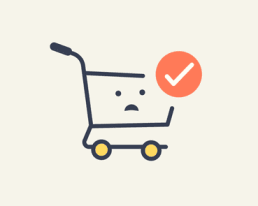Analytics are an essential tool for any e-commerce store owner.
They provide valuable insights into how your customers interact with your store, which can help you identify areas for improvement and increase conversions. In this blog post, we will explain how to use analytics to track and improve the performance of your e-commerce store.
First, it’s important to understand the different types of analytics that are available to e-commerce store owners. There are three main categories of analytics: web analytics, marketing analytics, and business analytics.
Web analytics
Provide data on how visitors interact with your website, including information on page views, bounce rates, and conversion rates. This data can help you understand how customers navigate your store and identify any areas where they may be experiencing difficulty. Popular web analytics tools include Google Analytics and Adobe Analytics.
Marketing analytics
Provide data on how customers interact with your marketing campaigns, including information on click-through rates, conversion rates, and return on investment. This data can help you understand which marketing strategies are working and which are not, and make adjustments accordingly. Popular marketing analytics tools include Google Analytics, Adobe Analytics, and Mixpanel.
Business analytics
Provide data on the overall performance of your business, including information on revenue, profit margins, and customer lifetime value. This data can help you understand the overall health of your business and identify areas for improvement. Popular business analytics tools include Salesforce, QuickBooks, and Xero.
Once you have set up your analytics tools, it’s important to regularly review the data and look for patterns and trends. For example, you may notice that your bounce rate is high on certain pages or that certain marketing campaigns are not converting as well as others. This information can help you identify areas for improvement and make adjustments to your website or marketing strategies.
One of the most important things to track is your conversion rate. This metric measures the percentage of visitors to your site who make a purchase. If your conversion rate is low, it may be because of issues with your website design or checkout process. You can use web analytics to identify which pages have the highest bounce rates and make changes to improve the user experience.
Another important metric to track is your customer lifetime value (CLV). This metric measures the total amount of revenue that a customer will generate over the course of their lifetime. If your CLV is low, it may be because of issues with your pricing strategy or product offerings. You can use business analytics to identify which products or services are most profitable and make changes to improve your CLV.
In addition to tracking your own performance, it’s also important to keep an eye on your competitors. You can use analytics tools like SEMrush or SimilarWeb to track their website traffic, search engine rankings, and marketing strategies. This information can help you identify areas where you may be able to improve your own performance and gain an edge over your competitors.
In conclusion, analytics are an essential tool for any e-commerce store owner. They provide valuable insights into how customers interact with your store and can help you identify areas for improvement and increase conversions. By regularly reviewing the data and making adjustments to your website and marketing strategies, you can improve the performance of your e-commerce store and drive more sales.
Let's talk
Want to learn more?
Let’s discuss how we can help you to maximize the performance of your ecommerce store and achieve your business goals.
March 21, 2023
Tips for Optimizing Your Magento Site for SEO
April 15, 2020
6 Proven Ways to Boost Magento Sales
April 24, 2025
Boosting eCommerce Efficiency with n8n Automations
March 21, 2023

